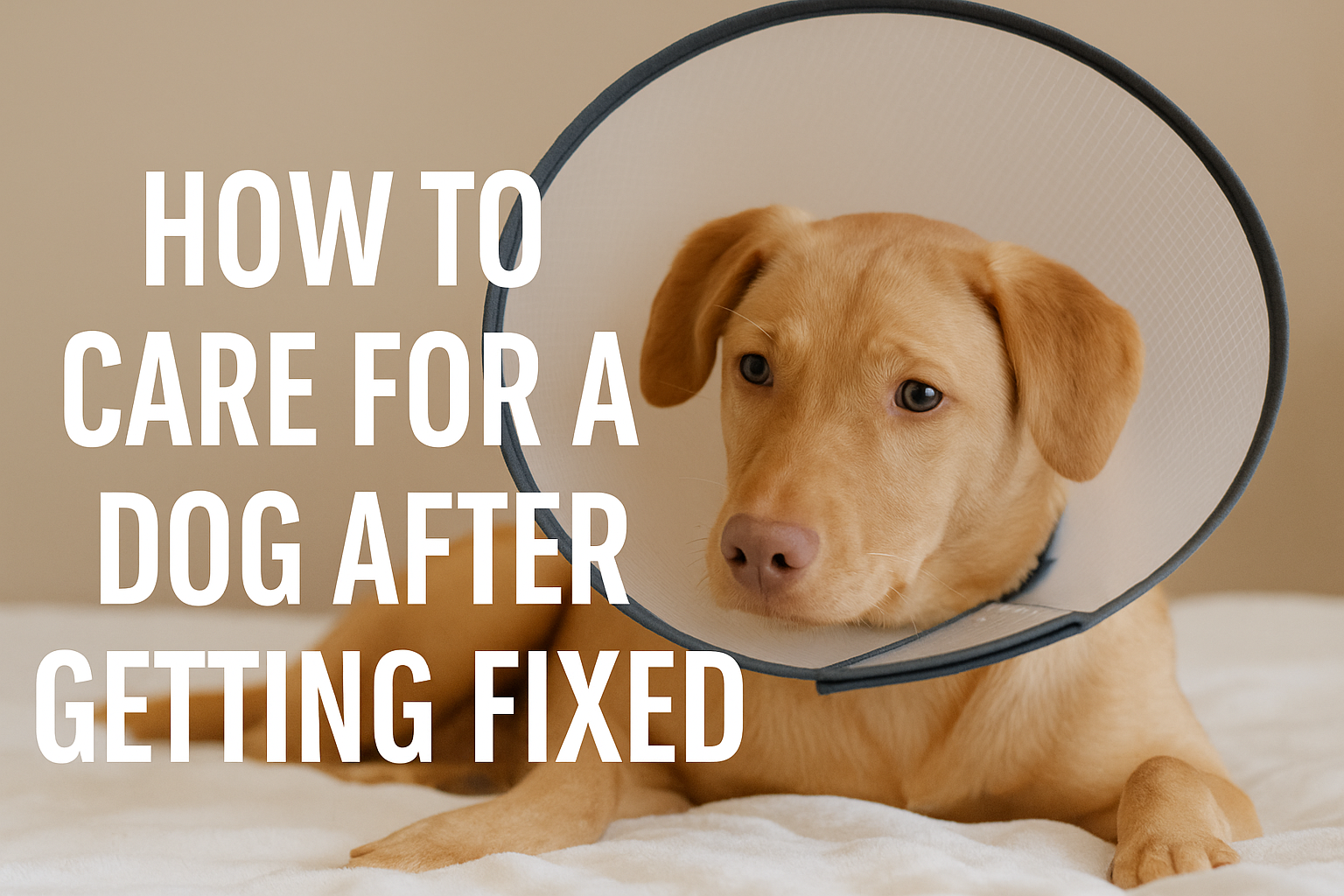How to Care For a Dog After Getting Fixed: Complete Post-Op Guide
Spaying or neutering your dog is a responsible and life-enhancing choice, but proper post-surgery care is critical to ensure your furry friend recovers safely and comfortably. This comprehensive guide walks you through everything you need to know about aftercare following your dog’s sterilization surgery.
Understanding the Procedure: What Does “Fixed” Mean?
The term “fixed” typically refers to either a spay (ovariohysterectomy) for females or a neuter (castration) for males. These are routine surgeries performed to sterilize dogs and prevent unwanted litters, as well as reduce certain behavioral and health risks. Both involve general anesthesia and incisions that require healing time.
Immediate Post-Op Care: The First 24 Hours
When you bring your dog home after surgery, they will likely be groggy and uncoordinated due to anesthesia. Provide a quiet, dimly lit space where your dog can rest without being disturbed by children or other pets. Offer a small portion of food and water, but don’t be alarmed if their appetite is low initially.
Avoid letting your dog jump or climb stairs. For large breeds or multi-story homes, using a baby gate or leash to restrict movement is a good idea. Your vet might recommend an Elizabethan collar (e-collar) to prevent licking or biting at the surgical site, which is essential for avoiding infections or torn stitches.
Feeding and Hydration Guidelines
Post-surgery, your dog might not eat its regular meal right away. Offer bland, easily digestible food if recommended by your vet. Always provide clean water, but avoid letting your dog gulp too much at once. Resume normal feeding schedules within 24 hours unless otherwise instructed.
If vomiting or diarrhea occurs after the first 24 hours, it could signal a complication or sensitivity to medication and should be checked by your vet.
Activity Restriction and Rest
Restrict your dog’s physical activity for at least 10 to 14 days after the procedure. Running, jumping, and rough play can cause the incision to reopen or delay healing. Leashed potty breaks and supervised short walks are usually acceptable after the first few days.
Crating or confining your dog to a small room may help manage activity, especially for energetic breeds. Soft bedding should be provided to avoid pressure on the surgical site.
Incision Care and Monitoring
Inspect the incision site daily for redness, swelling, discharge, or foul odor—all signs of potential infection. A small amount of bruising is normal, but anything unusual should be addressed promptly. Do not bathe your dog or let the incision get wet until the stitches are removed or dissolved.
Prevent your dog from licking the area using a cone, recovery suit, or bitter-tasting spray if needed. Some dogs require extra attention if they’re prone to chewing or obsessive behaviors.
Behavioral Changes to Watch
After being fixed, some dogs may appear more withdrawn, anxious, or even temporarily aggressive. These changes are usually related to discomfort or the effects of anesthesia and will often resolve within a few days. However, monitor for signs of pain such as whining, hiding, or refusal to eat or walk.
If your dog’s temperament drastically changes or worsens over several days, consult your vet. Also, some male dogs may still show sexual behavior for up to a month post-surgery due to residual hormones.
How to Apply/Use This Advice in Daily Life
Incorporating these aftercare practices into your daily routine can be simple and highly effective. Start by preparing a recovery-friendly space before the surgery. Have soft bedding, gates, or crates ready. Take a few days off or adjust your schedule to supervise your dog closely. Use timers or phone reminders for medication and incision checks.
Maintain a calm environment—soft music, dim lighting, and gentle interaction go a long way in supporting recovery. Avoid unnecessary trips or visitors during the healing period. Communicate with your vet regularly, especially if you’re unsure about any signs or symptoms.
Most importantly, be patient. Every dog heals at its own pace. By integrating these steps into your routine, you’ll give your dog the best chance at a speedy, complication-free recovery.
When to Seek Professional Help
There are certain red flags you should never ignore after your dog has been fixed. If you notice excessive swelling, bleeding, pus discharge, lethargy beyond the first 48 hours, refusal to eat, vomiting, or signs of extreme pain, it’s time to consult your veterinarian immediately. Delaying treatment can turn a minor issue into a serious health threat.
Additionally, if your dog has chewed out stitches, has reopened the incision, or shows symptoms like pale gums or a distended abdomen, seek emergency care. These can indicate internal bleeding or infection, both of which are life-threatening if untreated.
Conclusion: Consistent Care Leads to Confident Recovery
Getting your dog fixed is a crucial step in their long-term well-being, but the real success lies in how well you handle the recovery period. With thoughtful preparation, consistent observation, and timely care, your pet can heal quickly and return to their joyful self.
Remember, recovery isn’t just about physical healing—it’s also about emotional comfort. Stay consistent, stay calm, and trust the process. Your efforts now will have a lasting positive impact on your dog’s health and happiness for years to come.


